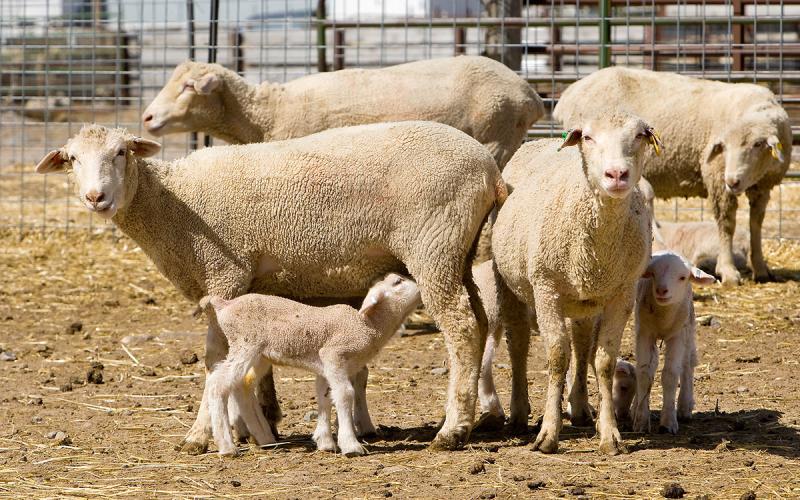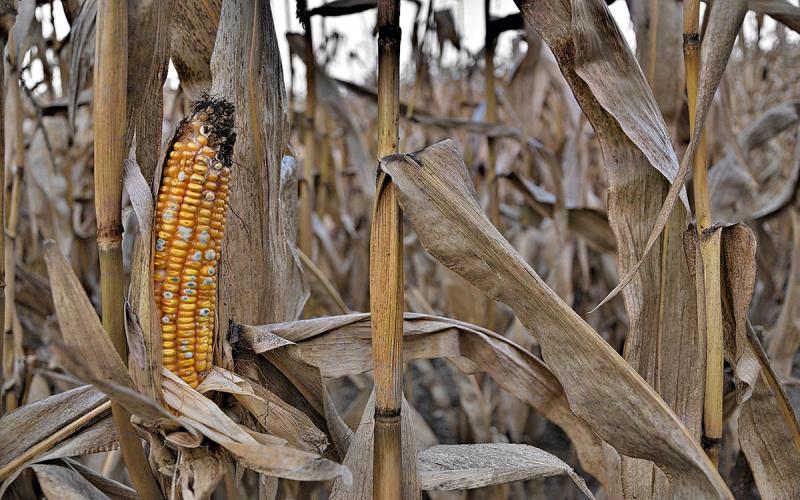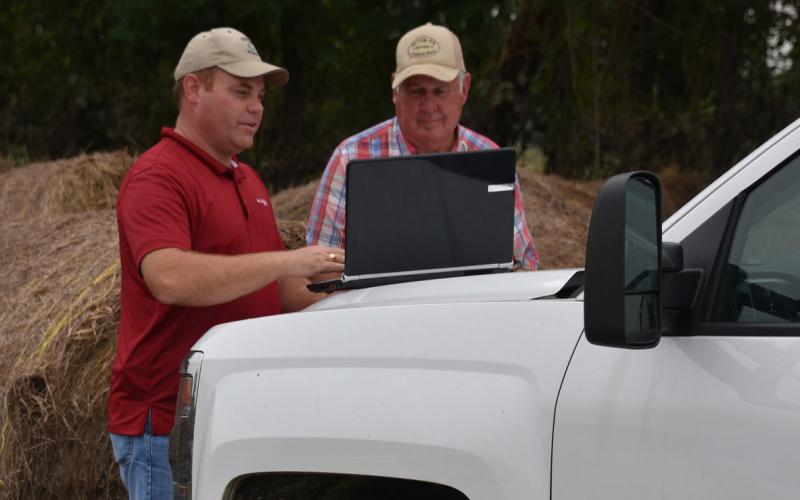Originally written by Tracey Erickson, former SDSU Extension Dairy Field Specialist.
When considering the importance of water in lactating cow diets, we need to remember that milk is 87 percent water, and its consumption is directly correlated with milk production and feed intake. Water also makes up anywhere from 55 percent to 70 percent of the body weight of a lactating dairy cow, depending upon the phase of the lactation cycle.
A lactating dairy cow will vary how much water she drinks on a daily basis, depending upon her size, milk production, dry matter intake, feed moisture, environmental temperature and humidity, daily activity, and temperature, quality and availability of the drinking water. During periods of heat stress water also helps cool the cow.
Estimating Water Needs
To estimate the amount of water needed, one can utilize the equation published in the 2001 Nutrient Requirements of Dairy Cattle (NRC):
Water Intake, pounds/day = 35.25 + 1.58 x dry matter intake (pounds/day)
+ 0.90 x milk yield (pounds/day)
+ 0.11 x sodium intake (grams/day)
+ 2.65 x weekly mean minimum temperature (°F/1.8-17.778)
“Essentially, water consumption will change 1.58 pounds for each 1-pound change in dry matter (DM) consumed, 0.90 pound for each 1 pound of milk produced, 0.11 pounds for each gram of sodium consumed and 1.47 pounds for each degree Fahrenheit of change in the weekly mean minimum temperature. The weekly mean minimum temperature is typically 10 °F to 15°F lower than the mean daytime temperature (Schroeder, 2015)”.
Understanding Drinking Behavior
Understanding a cow’s drinking behavior is critical to maximize water consumption. Studies have reported that a lactating cow consumes 30 to 60% of its daily water needs shortly after milking. Water consumption is often associated with feeding and milking. Thus, in parlor situations it becomes critical to have access to water in the return lanes from the parlor back to the free stalls. Having adequate trough space for each cow returning from a parlor rotation, helps minimize boss cows preventing access to water and also allows them to naturally access the waterers by lining up side-by-side. When cows are exiting the parlor, they should have access to a minimum of 1- 2 feet of linear trough space per cow in the return alleys times the number of cows exiting the parlor at one time.
In addition to locating water access at the parlor exit, it is also critical to provide water access in the loafing area. Cows housed in confinement housing should never have to walk more than 50 feet for water or in grazing situations they should always be within 600 feet of water. Provide at least one waterer for each 15 to 20 cows, and a minimum of two water sources per group where cows are housed. Farm studies indicate that water troughs should be 2 inches in length per cow, with an optimal height of 24 to 32 inches for large breeds and allow a minimum depth of 3 inches of water to a maximum depth of 12 inches. Shallower troughs prevent stagnant water, are easier to clean, fill quickly given adequate water flow, and provide adequate linear space for drinking access. In free stall barns when locating the waterer in cross-over alleys make sure the alley is at least 13.5 feet wide, which will provide 1 foot width for the water trough, 7.5 feet for the cow, and another 5 feet for cows passing through.
Cows prefer moderate water temperatures between 40 to 65 °F, instead of having it extremely cold or hot. Thus, utilizing the water from the plate cooler in the exit lane in the parlor becomes an excellent supply source. However, consideration must be given that this source is able to supply enough water during peak demand otherwise additional water should be supplemented.
Having enough water flow is critical to maximize water consumption. Even during peak access times, such as being locked-up for herd health exams or heat stress periods, cows should never have to wait for a drink of water because of poor flow rates when enough drinking space has been provided. A minimum flow rate of 3 to 5 gallons of water per minute is recommended.
Quality and Freshness
Water quality is critical to maximize consumption. To be blunt, if you wouldn’t drink it the cow probably doesn’t want to drink it either! When assessing water quality, we consider odor and taste, the physical properties (pH, total dissolved solids (TDS), total dissolved oxygen and hardness), the presence of toxic chemicals, the presence of any access minerals or compounds (nitrates, sodium sulfates and iron) and presence of bacteria. To assess your water quality it is often recommended to analyze at least for TDS, nitrates, sulfates and bacteria.
Cleaning waterers daily or at minimum weekly is an absolute must! This insures maximum intake of fresh, clean water by all livestock. It is encouraged to utilize water troughs that not only facilitate maximum water consumption but also enable ease of cleaning.
In Summary
In summary, providing clean, fresh, adequate amounts of water to the lactating dairy herd will help maximize feed intake and milk production while keeping cows comfortable and healthy.


